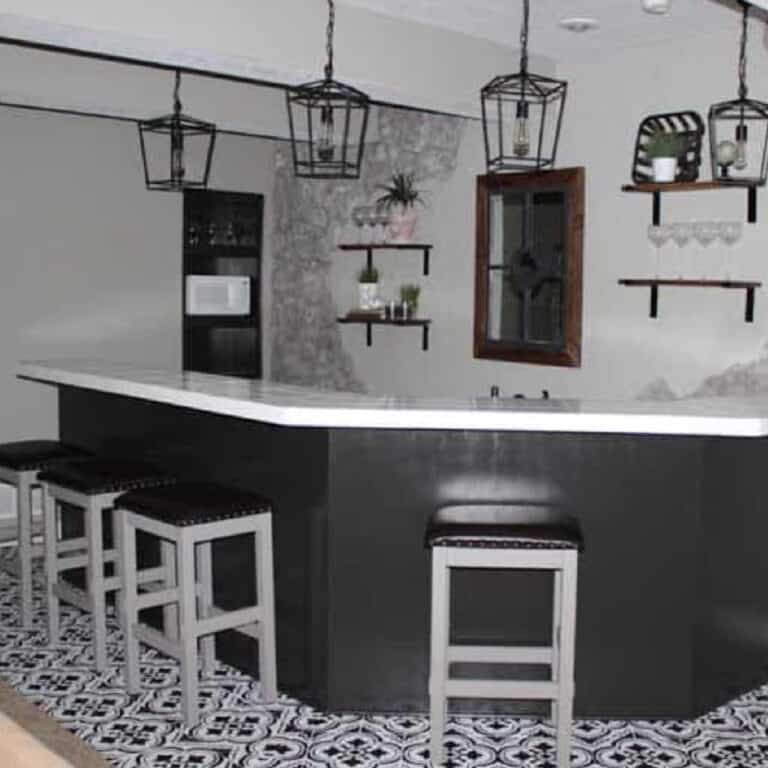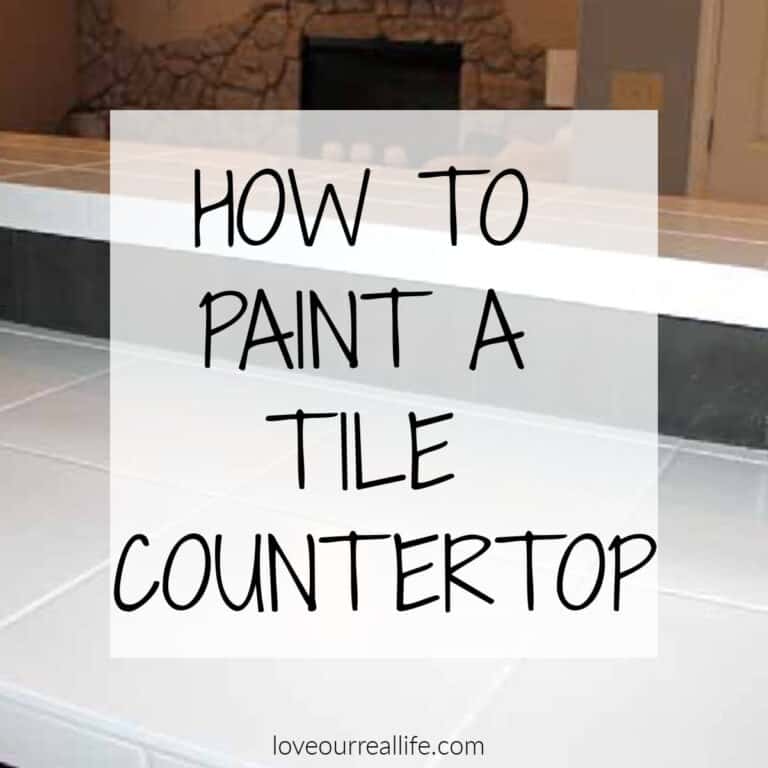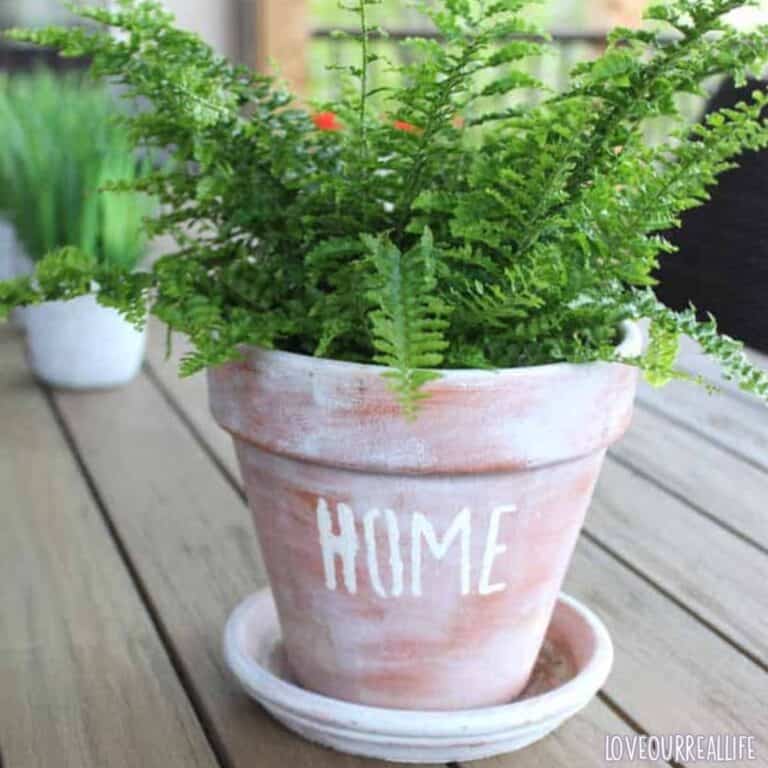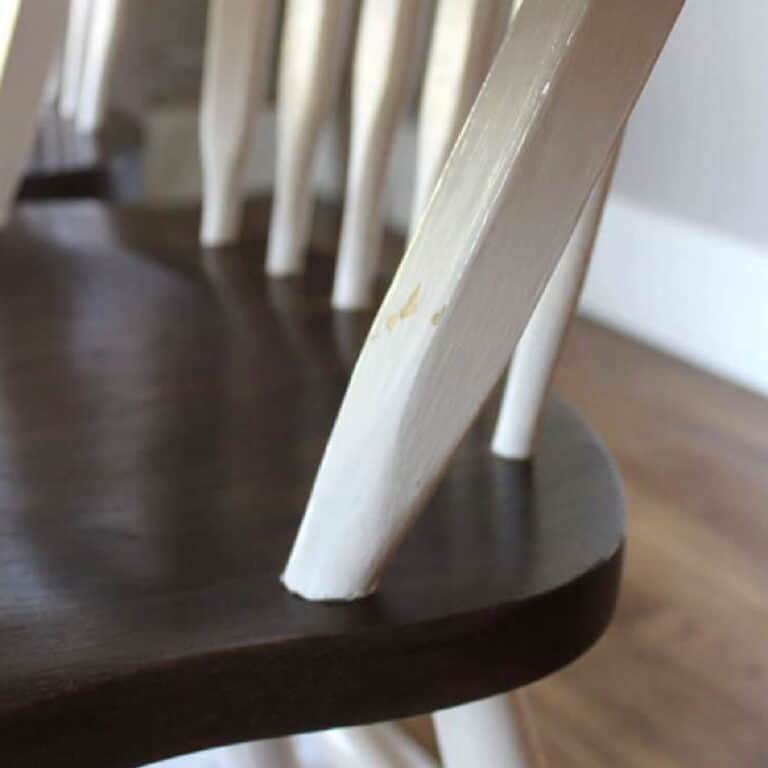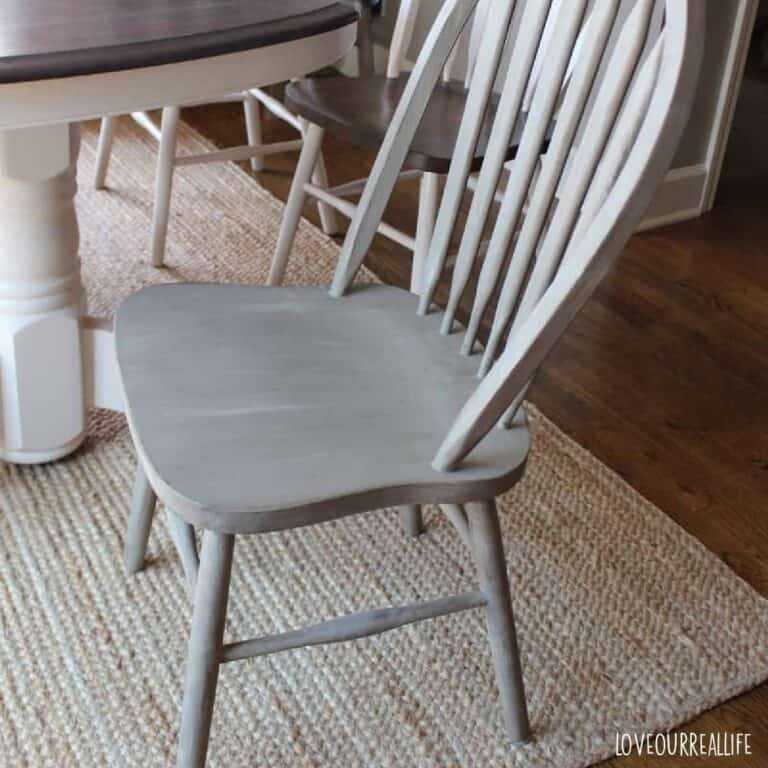How To Remove Chalk Paint from Wood Furniture (3 Ways)
Chalk paint is a favorite among the DIY-ing community, whether it is Annie Sloan Chalk Paint or another brand. It’s relatively cheap, easy to use, lasts for years, and gives a piece of furniture a gorgeous rustic, distressed look. But if you are looking for a change, either to try a different color of paint or to get to the bare wood, there are solutions to remove chalk paint. Luckily, there are several approaches you can take to remove chalk paint.
To remove chalk paint, you can follow a chemical, thermal, or mechanical approach. The chemical method includes using a chemical or paint stripper to get the job done. The thermal method relies on using heat (e.g., a heat gun) to remove chalk paint. A mechanical approach for paint removal involves sanding.

As you can see, when it comes to removing chalk paint, you have options.
Get more information about all things chalk paint here: What is chalk paint for furniture.
There are pros and cons to any paint removal solution you choose. These tips will help you determine what is best for your situation and skill level.
Lead paint can be toxic if it happens to be one of the layers. So, please use caution when removing old paint from furniture. Also, remember to test any method in an inconspicuous area before starting the entire project.
It’s also important to know you can paint over chalk paint! That is the beauty of using chalk style paint. But, if you are still interested in removing chalk paint, these methods will be a great guide.
1. Sanding to Remove Chalk Paint: The Mechanical Removal
The first approach and best way I’d recommend trying is mechanical removal. This usually involves sanding or scrubbing of some sort. As the name suggests, this method relies on physically lifting off the chalk paint from the surface it’s adhered to.
Sanding chalk paint is not necessarily an easy way, but is a tried and true way to remove chalk paint and any topcoat or wax.
You’re always in control, as you’re the one who decides how much pressure to apply and when. Therefore, this is also the best approach to keeping the base surface smooth and free from any damage if done correctly.
It also will reveal the wood grain should you want to stain the wood surface or even leave it as bare wood.
On the other hand, sanding is tedious work, so you may question whether it is the easiest way.
You have to put your joints and muscles to use to get the job done. Moreover, some stubborn paints might be challenging to get off by sanding alone (or you might be tempted to give up before you’re able to remove them).
Still, this is the method I’d suggest trying first, as it’s the most straightforward, cheapest, and gives you a good idea of what you’re working with. Sanding is especially great for small pieces of furniture requiring little time and effort.
Are there any tips and tricks you should know before sanding chalk-painted furniture? Well, you’re about to find out.
Removing Chalk Paint by Sanding
Before taking you through step-by-step instructions on removing chalk paint by sanding it, you should take a few precautions before getting started. If you’ve ever sanded before, you know the kind of mess that such a process can leave behind.
The tiny particles that fly off end up landing everywhere, so you first want to ensure that you wear protective gear and clothing to ensure the dust doesn’t get into your nose, mouth, or eyes.
Protecting yourself is even more critical when dealing with several paint coats. When stripping chalk paint furniture, you may find old latex paint layers beneath the old chalk paint. It’s hard to be sure of the VOCs (volatile organic compounds) if previously painted with regular or oil-based paint, so protect your lungs.
In the same vein, it’s essential to ensure that you’re working in a well-ventilated area so that you’re able to breathe in some fresh air.
Last but not least, do your best to move or, at the very least, cover any areas of the home or furniture you don’t want to get covered by dust.
If this is your first time sanding a furniture piece, I highly recommend practicing on an old board or unimportant wood-painted surface before diving into a piece you love. It takes a bit to get used to the amount of pressure and process.
With that out of the way, let’s get into your step-by-step, ultimate guide on how to remove chalk paint by sanding it:
- Gather your supplies. As mentioned, this is one of the most straightforward approaches on today’s list but does require some elbow grease. You need a few sandpapers (different grit levels), a power sander, a clean, lint-free cloth, and your protective gear.
- Start the electric sander using a medium grit. For amateurs, start with medium grit sandpaper, 100-120 grit; if this level of grit is sufficient to remove a bulk of the paint, perfect. The goal is to remove the paint without harming the wooden furniture surface.
- Replace the sandpaper with a finer grit one, ~220 grit. The one you choose should be around 200 grit or higher (though you can go a bit coarser or finer too). As you go, you should start seeing the tone of the original surface peek through – use caution not to damage the wood itself.
- Switch to handheld sandpaper. After you’ve gotten rid of most of the old paint but there are still some stubborn spots or remaining paint, it’s time to take matters into your own hands – literally. Take some fine-grit sandpaper and work on those hard-to-reach areas until every last bit of paint is gone, and you have a smooth surface.
- Wipe off any residue. This is a step you should also complete repeatedly during the previous phases. Sometimes dust or particles left behind can be mistaken for stubborn paint, putting you at risk of over-sanding the wooden surface. Now, it’s time to give the surface you’re working on one last wipe-down so that you can fully appreciate the results of your hard work. I like to vacuum first, wipe with a dry, soft cloth, then, for best results, use a damp rag (but not wet) to get any remaining dust from the entire surface.
And with that last step, you’re done! The process takes quite a bit of time and effort, but in my opinion, it really can’t get simpler or more accessible than this.
Get more tips for painting items in your home here.
Sanding is my recommended method for furniture with many layers of old paint or wax. Or, if you intend to stain the wood, sanding is your best bet.
But read on to see if the different methods mentioned below are something to consider.
2. Paint Stripper to Remove Chalk Paint: Chemical Removal
Chemical removal is the other method I use most frequently to remove chalk paint.
Now, this method can be tricky, as it exposes you to toxic fumes while also putting the surface you’re working on at risk of damage if you make a mistake.
With that said, this is arguably the most uncomplicated approach you can try, and it works on even the most stubborn stains in most cases.
For chemical removal, you can either use a paint remover or a chemical stripper.
CITRISTRIP Paint and Varnish Stripping Gel is my favorite stripping product. It is much less toxic than many alternatives. When updating my kitchen table, I used it with great success.
Removing Chalk Paint by Using a Paint Remover or Chemical Stripper
Again, before starting, you want to take necessary precautions by ensuring that you work in a well-ventilated space and wear protective gear. Prep the area with drop cloths as needed and begin:
- Gather your materials. For this one, you’ll need your solvent of choice, warm water, a clean cloth (or several), goggles to protect your eyes, paint brush, steel wool, paper towels, a toothpick or toothbrush, and a sponge.
- Apply the solvent to the paint. Whether you’re using a paint remover or a chemical stripper, follow the manufacturer’s instructions on how to use it correctly.
- Scrape or scrub the paint off. Use steel wool, a plastic paint scraper, a putty knife, or a sponge. If needed, go over stubborn spots with some sandpaper.
- Wipe off any residue. Have a paper towel ready to wipe up any excess residue. Again, a clean damp cloth is the best candidate for the job.
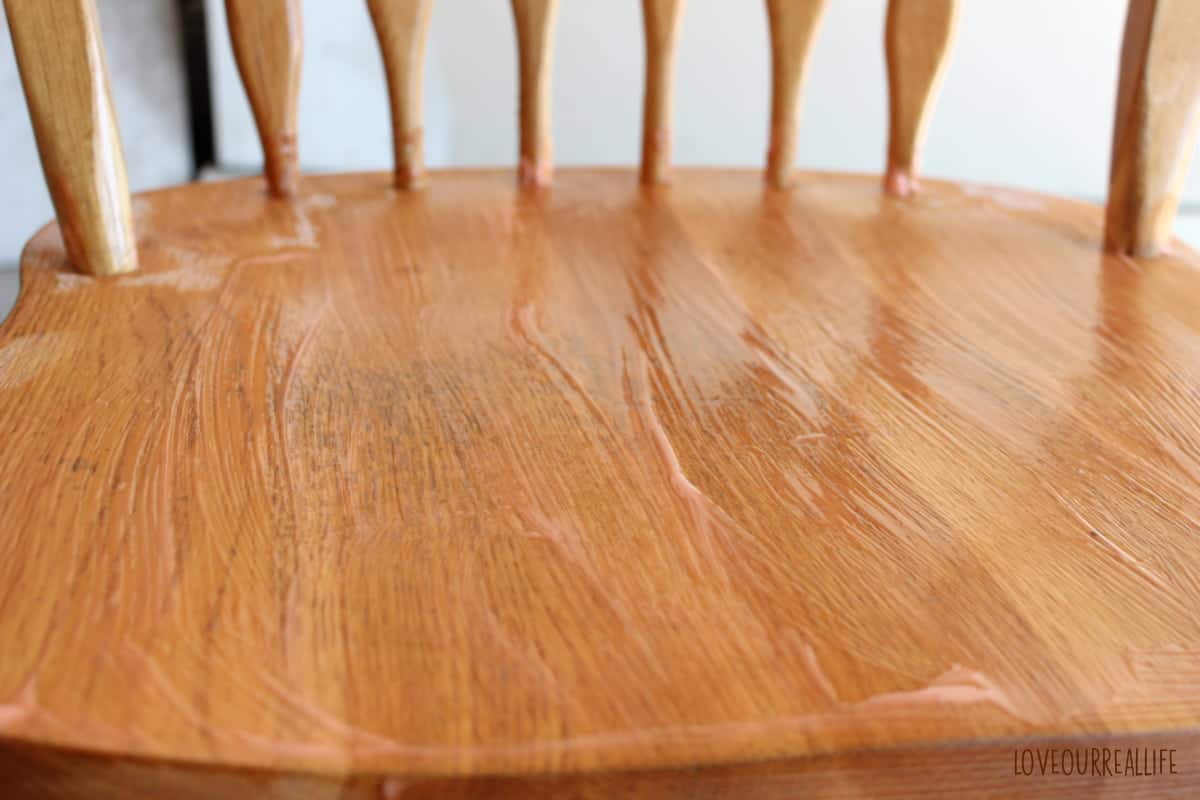
When using Citristrip, the gel must stay wet. So once applied, cover with Saran wrap and leave overnight. Then, remove the saran wrap and scrape the old paint away with a plastic scraper. A toothpick is a great way to get into cracks and crevices.
Mineral spirits (a paint thinner) can often help wipe away residue.
Then use a damp rag dipped in warm soapy water to clean it. Let the piece fully dry before adding any new paint.
3. Remove Chalk Paint with Heat: Thermal Removal
Thermal chalk paint removal is a method that cuts all of your hard work in half, as it purely relies on heat’s effect on this type of paint. Be warned, I have only researched this approach.
I have never used it myself as I do not have the tools for the thermal removal of paint.
It’s far from the safest strategy you can choose. But I want you to have options!
Since you’ll be working with heat, you must be extra careful. So make sure you have your heat-protective gloves ready, as they’re a must.
Moreover, you’ll want to work in a well-ventilated area, turn the heat gun off time and time again to avoid overheating the chalk paint, and have a fire extinguisher nearby, just in case.
That’s because you’ll need one particular piece of equipment to pull off thermal removal – a heat gun. This method can be used on both thin and thick layers of paint.
Removing Chalk Paint by Using a Heat Gun
Based on my research, here’s how you can remove chalk paint by using a heat gun:
- Gather your supplies. As always, have everything you need ready and nearby. You’ll need a heat gun, protective gear, handheld sandpaper, a dull knife to scrape off excess paint, and a clean damp cloth.
- Start applying heat to the chalk paint. Turn on the heat gun and do your best to hold it approximately ten inches (25.4 cm) above the surface you’re working on. If that doesn’t seem to be doing anything, you can move an inch or two closer, but I don’t recommend going any further, as you don’t want to cause any damage. Take on a small section at a time, maintaining a 45° angle between the gun and the surface.
- Scrape off brittle paint. After being subjected to heat, chalk paint starts to wrinkle and get extremely brittle. That’s when you want to go in with a dull knife to scrape it right off without damaging the surface.
- Sand any stubborn spots. After heat-treating the paint, you should be left with a spotless surface. However, if there’s any stubborn residue left, you can go back to the OG approach and sand it right off.
- Wipe off any residue. Now that the paint has been effectively removed, take a damp cloth and go over the surface you’ve been working on to reveal its new look in all its glory.
Remember to clean your piece well after removing the paint, regardless of your chosen method. Having a bucket of water nearby with mild dish soap will do wonders. Mineral spirits is also great to clean after removing paint.
Conclusion
If you’re looking to get chalk paint off your furniture, there’s no shortage of approaches you can try.
With that said, you’ll always be following one of three main removal methods: mechanical, thermal, and chemical – each with its advantages and drawbacks.
Try sanding first, as it gives you better control and makes it less likely for you to damage the surface.
However, the perfect approach for you will ultimately depend on your skill set, preferences, the kinds of tools you have on hand, and how stubborn the chalk paint is.
Good luck, and I hope you find the best option to remove your old chalk paint.
Click here for more information regarding chalk paint for furniture.



